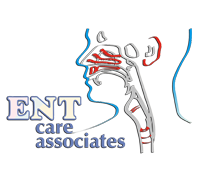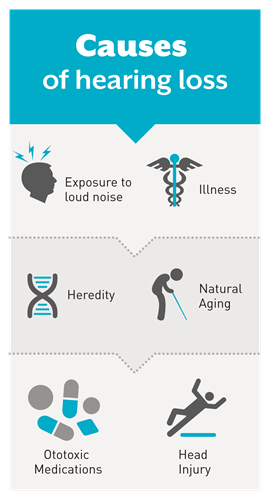Voice Therapy
VOICE DISORDERS
Voice disorders can have a neurological, organic, functional or psychological origin and affect the voice and vocal tract. They range from complete absence of voice (aphonia) to varying degrees of vocal impairment.
People with voice disorders have very typical complaints, which include.
Hoarseness
Scratchy voice, weak voice, breathy voice.
Difficulty with loudness, increased effort to talk.
Pain or discomfort while speaking or singing.
Change in singing voice.
Voice fatigue (worsening voice quality or discomfort with voice use) .
Changes in voice after trauma or surgery to the neck, throat, or larynx.
Change in pitch of the voice, Female voice in males (puberphonia) or male voice, in females (andropohonia).
Hyper and hyponasality (Nasal voice).
Causes of voice disorders
Organic causes include the following:
Structural
Vocal fold abnormalities (e.g., vocal nodules, oedema, glottal stenosis and polyp).
Inflammation of the larynx.
Trauma to the larynx (e.g., from intubation, chemical exposure, or external trauma).
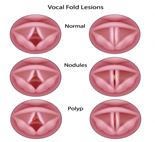
Neurologic
Recurrent laryngeal nerve paralysis
Adductor/abductor spasmodic dysphonia
Parkinson's disease
Multiple sclerosis
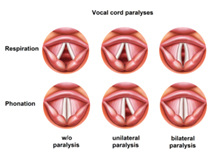
Functional causes include the following:
Phonotrauma (e.g., yelling, screaming, excessive throat-clearing)
Muscle tension dysphonia
Ventricular phonation
Vocal fatigue (e.g., due to effort or overuse)
Psychogenic causes include the following:
Chronic stress disorders
Anxiety
Depression
Conversion reaction (e.g., conversion aphonia and dysphonia)
How the Voice problems can be prevented?
Avoiding Abuse or misuse of voice like yelling.
Drinking sufficient water.
Avoiding throat clearing.
Avoiding spicy foods.
Avoiding drugs like aspirin or anti allergic drugs.
Avoiding of smoking an alcohol.
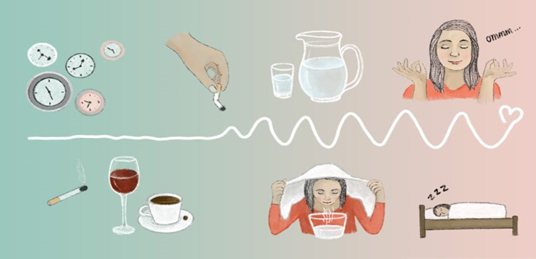
How is a voice disorder diagnosed?
A thorough evaluation of the patient is required to diagnose the patient's problem and to decide its management. A typical evaluation normally includes:
A thorough history taking, to determine the exact nature and possible causes of the complaint
Assessing the function of the vocal folds with Flexible Laryngoscope.
Examining the vocal cords using a specialized flickering light source, called digital Laryngostroboscopy. This allows an assessment of the movement and vibration of the vocal cords. This best & latest instrument for early detection of vocal cord cancer.
Analysis of the sound signal (acoustic or computerized voice analysis).
Other special tests may also be required for a complete evaluation of the voice disorder. Many times a voice problem has to be diagnosed and treated by a team of specialist like E.N.T Surgeon, Speech therapist/Speech Language Pathologist (SLP’s), gastroenterologist, endocrinologist, neurophysician and psychologist etc.
Three Main Approaches in the Treatment of Voice Disorders
1. Medical Treatments
Advances in general medicine have also advanced treatment of voice disorders. For example:
New anti-reflux medicines provide effective medical treatment for reflux laryngitis. (For more information, see Reflux Laryngitis.)
Effective monitoring and treatment of low thyroid hormone levels help patients with voice disorders caused byhypothyroidism.
Advances in the use of botulinum toxin, type A as an injected medicine for muscle disorders provides a key treatment option for voice disorders caused by muscle spasm (spasmodic dysphonia). (For more information, see Spasmodic Dysphonia.)
2. Voice Therapy
Voice therapy is an important part of treatment for many voice disorders.
Voice therapy is designed to treat the most common underlying cause of voice disorders: voice misuse and abuse. Voice therapy is often combined with other treatment approaches.
Laryngologists often recommend voice therapy as first-line treatment for voice disorders in which voice misuse or abuse has contributed to long-term irritating injury to the vocal folds, resulting in lesions (such as vocal fold nodules, cysts or polyps). When a patient's case is not complicated, voice therapy can help patients eliminate harmful voice habits through proper voice technique. Over time, voice therapy can make the lesions much smaller or go away completely.
Voice therapy is also indicated when voice misuse or abuse results in vocal fold scarring. Although unable to remove scarring, voice therapy can prevent further worsening of vocal fold scar and/or can help patients gain some voice function with proper voice technique.
For patients who have had surgery to remove a vocal fold growth (cancerous or non-cancerous), voice therapy plays a key role in guiding recovery and rehabilitation of voice function. (For more information, see Voice Therapy.)
3. Surgical Treatments
Surgical treatments of voice disorders have improved dramatically in recent years.
This improvement is due to dramatic changes in surgical techniques based on:
Better understanding of voice function (voice physiology)
Better understanding of the impact of voice disorders on voice function (voice pathophysiology)
Better surgical instrumentation
Better medical and voice therapies
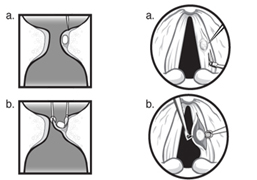
Role of SLP in voice disorder
SLPs are trained to evaluate voice use and vocal function to determine the cause of reported symptoms and to determine optimal treatment methods for improving voice production.
Speech Therapy
AUDITORY VERBAL THERAPY
The Auditory-Verbal Method develops spoken language and language comprehension of children with hearing loss through listening. This method
- Requires the use of amplification during all waking hours
- Encourages the development of speech and language through listening with their hearing aids or cochlear implants
- Strongly encourages maximum parental participation at every step
- Mainstreams into regular schools from the beginning or as soon as possible.
Goals and objectives focus on natural, typical developmental patterns for listening, speech, language & cognition. There are Guiding Principles that govern the process of learning listening and spoken language. The ultimate goal for families who choose the Auditory-Verbal method is confidence that the child with hearing loss will have access to a full range of academic, social and occupational choices.
An Auditory-Verbal Program requires adherence to all 10 of the following guidelines
Guiding Principles of Auditory-Verbal Therapy:
- Promote early diagnosis of hearing loss in new born, infants, toddlers and young children, followed by immediate audiological management and auditory-verbal therapy.
- Recommend immediate assessment and use of appropriate, state-of-the-art hearing technology to obtain maximum benefits of auditory stimulation.
- Guide and coach parents* to help their child use hearing as the primary sensory modality in developing listening and spoken language.
- Guide and coach parents to become the primary facilitators of their child’s listening and spoken language development through active consistent participation in individualized auditory-verbal therapy.
- Guide and coach parents to create environments that support listening for the acquisition of spoken language throughout the child’s daily activities.
- Guide and coach parents to help their child integrate listening and spoken language into all aspects of the child’s life.
- Guide and coach parents to use natural developmental patterns of audition, speech, language, cognition and communication.
- Guide and coach parents to help their child self-monitor spoken language through listening.
- Administer ongoing formal and informal diagnostic assessments to develop individualized auditory-verbal treatment plans, to monitor progress and to evaluate the effectiveness of the plans for the child and family.
- Promote education in regular schools with peers who have typical hearing and with appropriate services from early childhood onwards.
The term “parents” also includes grandparents, relatives, guardians and any caregivers who interact with the child.
SPEECH AND LANGUAGE DISORDERS
Speech is how we say sounds and words. People with speech problems may:
- Not say sounds clearly
- Have a hoarse or raspy voice
- Repeat sounds or pause when speaking, called stuttering
Language is the words we use to share ideas and get what we want. A person with a language disorder may have problems:
- Understanding
- Talking
- Reading
- Writing
Children and adults can have speech and language disorders. Speech-language pathologists, or SLPs, can help.
ADULT SPEECH AND LANGUAGE DISORDER
There are many reasons why you might have a speech or language problem. Some problems start in childhood. Others happen after an illness or injury.
Speech Disorders
- Apraxia
- Dysarthria
- Stuttering
- Voice
Language Disorders
- Aphasia
Medical Conditions
- Dementia
- Laryngeal Cancer
- Oral Cancer
- Right Hemisphere Brain Injury
- Traumatic Brain Injury
CHILD SPEECH AND LANGUAGE DISORDER
Most children develop speech and language skills within a specific age range. A child who takes longer to learn a skill may have a problem.
Speech Disorders
- Childhood Apraxia of Speech
- Dysarthria
- OrofacialMyofunctional Disorders
- Speech Sound Disorders
- Stuttering
- Voice
Language Disorders
- Preschool Language Disorders
- Learning Disabilities (Reading, Spelling, and Writing)
- Selective Mutism
- Early Detection
- Early Identification of Speech, Language, and Hearing Disorders
Medical and Developmental Conditions
- Attention Deficit/Hyperactivity Disorder
- Autism (Autism Spectrum Disorders)
- Cleft Lip and Palatev
- Right Hemisphere Brain Injury
- Traumatic Brain Injury
